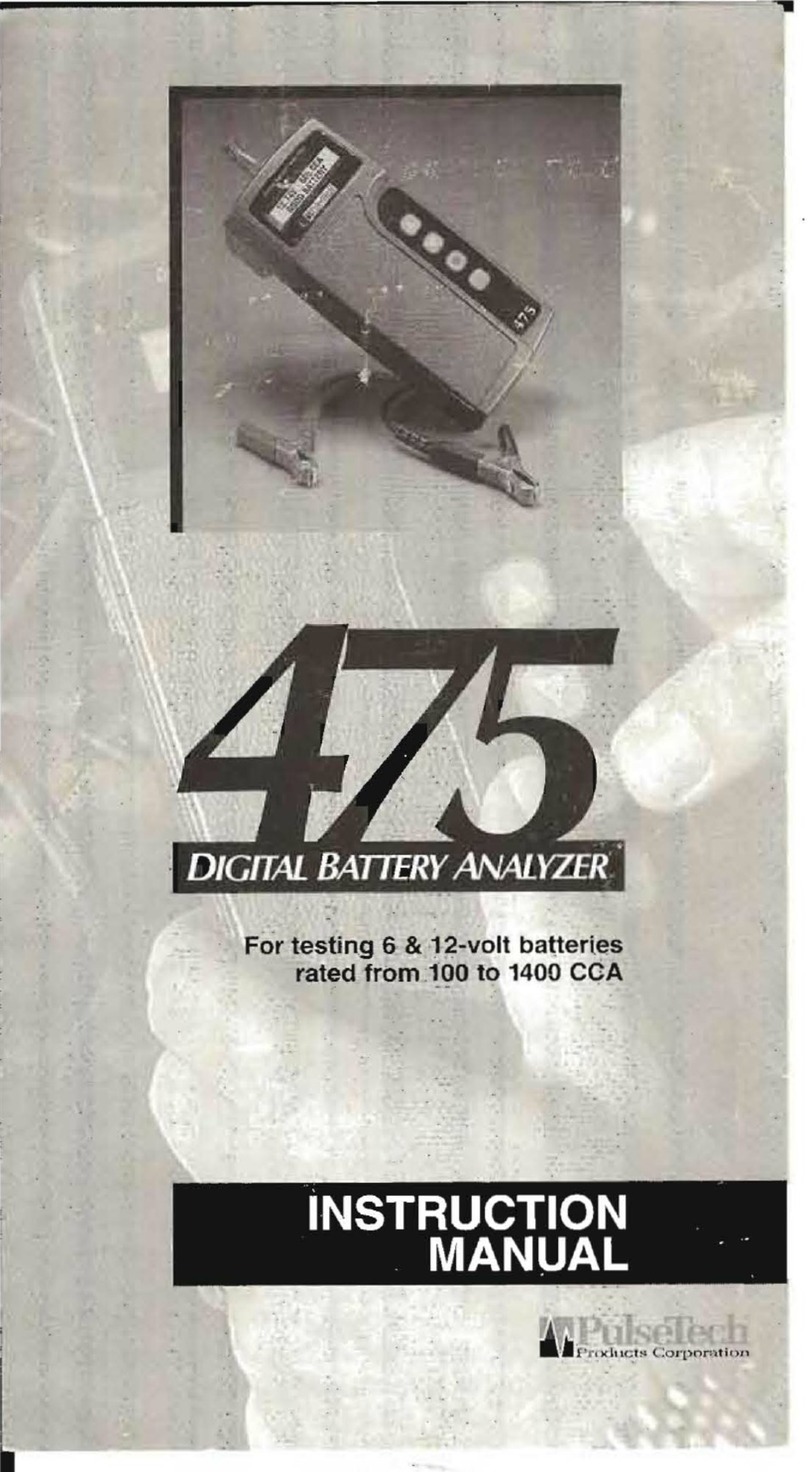www.pulsetech.net 7
HIGH CHARGING VOLTS WHEN TEST AT IDLE
The voltage output from the alternator to the battery ex-
ceeds the normal limits of a functioning regulator. Check
to ensure there is no loose connection and the ground connection is normal. If there is
no connection issue, replace the regulator. Since most alternators have the regulator
built-in, this may require that you replace the alternator.The normal high limit of a typical
automotive regulator is 14.7 volts +/- 0.05. Check manufacturer specifications for the
correct limit, as it will vary by vehicle type and manufacturer.
7. Following the charging system at idle test, press «ENTER»
for the charging system with accessory loads. Turn on the
blower to high (heat), high beam headlights, and rear de-
fogger. NOTE: Do not use cyclical loads such as air conditioning or windshield wipers.
8. When testing older model diesel engines, the users need
to run up the engine to 2500 rpm for 15 seconds. You will
view the screen as shown:
9. Press «ENTER» to look for the amount of AC ripple voltage from the charging system
to the battery. One of two testing results will be displayed along with the actual testing
measured.
RIPPLE DETECTED NORMAL
Diodes are functioning well in the alternator / stator.
EXCESS RIPPLE DETECTED
One or more diodes in the alternator are not functioning
or there is stator damage. Check to ensure the alternator
mounting is sturdy and that the belts are in good shape
and functioning properly. If the mounting and belts are good, replace the alternator.
10. Press the «ENTER» key to continue the charging system with accessory loads. One of
the three results will be displayed along with the actual testing measured.
CHARGING SYSTEM VOLTAGE HIGH WHEN TESTED WITH ACCESSORY LOADS
The voltage output from the alternator to the battery ex-
ceeds the normal limits of a functioning regulator. Check to
ensure there are no loose connections and that the ground
connection is normal. If there are no connection issues, replace the regulator. Since most
alternators have the regulator built-in, this may require that you replace the alternator.
ALT. IDLE VOLTS
xx.xxV HIGH
TURN ON LOADS'
AND PRESS ENTER
RUN ENGINE UP TO
2500 RPM 15 SEC
RIPPLE DETECTED
xx.xxV NORMAL
NO RIPPLE DETECTED
RIPPLE DETECTED
xx.xxV HIGH
ALT. LOAD VOLTS
xx.xxV HIGH
Or



























